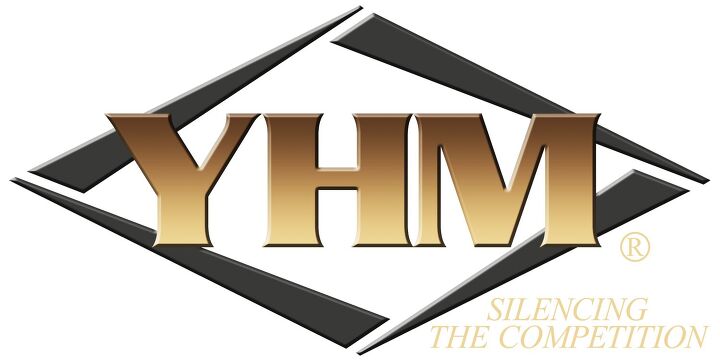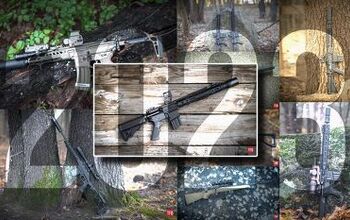SILENCER SATURDAY #269: First Shots – The SIG MCX-SPEAR And SLH SLX Suppressors

Good morning everyone and welcome back to TFB’s Silencer Saturday brought to you by Yankee Hill Machine, manufacturers of the best value for performance suppressors on the market. Last week we reviewed the attributes of what I think makes the SIG MCX the best suppressor platform currently available – especially when we are talking about rifles chambered in 300BLK. This week we step it up a notch with the brand new SIG MCX-SPEAR short barrel rifle chambered in 7.62×51 paired with the SIG SLH762-QD (full size) and SIG SLX762C-QD (compact) suppressors. As a normally practical, tool-focused shooter, why am I drawn to a 13″ 7.62 NATO rifle? Let me explain.
- SIG MCX SPEAR Arrives – The Civilian Version of the Army XM7 Rifle
- SILENCER SATURDAY #268: Why Is The SIG MCX The Best Suppressor Host Available?
- SILENCER SATURDAY #248: SIG Sauer MCX Virtus, MCX-Spear LT, and SLX762C-QD Rifle Suppressor
- SILENCER SATURDAY #215: SIG Sauer SLH300TI & SLH762 Suppressors
SILENCER SATURDAY #269: First Shots – The SIG MCX-SPEAR And SLH SLX Suppressors
Barrel length isn’t just about maneuverability and portability. Barrel length is first and foremost about efficiency and velocity. I won’t rehash all the details, but in case you missed my prior rants on the subject, a rifle’s barrel is where all the magic happens. Most of us only tend to focus on accuracy when it comes to barrel specifics because, for the most part, manufacturers have done all the other calculations and leave you with a handful of length choices. These calculations focus on the amount of powder a cartridge holds and the optimal length of a barrel to burn all that powder to achieve the maximum practical muzzle velocity.
I say practical muzzle velocity because if we left barrel length decisions up to calculators and spreadsheets, we would all be walking around with 22″ in 5.56mm barrels and 30″ 7.62mm barrels. Between diminishing returns and maintaining a portable weapon, concessions have to be made with the real-world application of barrel lengths.
If you asked me six months ago if I would consider buying a 13″ 7.62×51 rifle I would have replied back with a few questions that challenged any practicality over a smaller, lighter 300BLK rifle. After all, most .308 rifles are in the 18″ to 22″ barrel length range. By chopping off five inches, you are leaving valuable velocity behind in the form of window shaking booms and epic flashes of light. (I promise that we’ll get to suppressor use in a second).
Note: I’m a hypocrite – I just remembered that I own a PTR K3P – a 12″ H&K G3K clone.
Between SIG’s media range day in January and now, I asked the “but why?” question to several people, all of whom are smarter than me and I received a variety of different answers. One of the plausible responses was that SIG was offering a commercial gun in a very specific contract configuration for some government commercial off-the-shelf (COTS) requirement. Another answer that worked focused on chambering the first MCX-SPEAR guns in a proven, established cartridge and then offering .277 Fury/6.8 conversion kits at a later date. That seemed backwards to me – I you want to grow the popularity of a good round, build the guns and the people will come.
But the one lightbulb that was offered in response to the “but why?” question came in the form of a single word with no further explanation.
Hybrid.
As in hybrid cases. After talking to some of the big brains at SIG following the NGSW contract award, I got a better understanding of the limitations of brassed cased cartridges in modern weapons. Every part of a case is supported by a cylindrical steel chamber except one – the case head. Well two if you want to get technical – the case mouth with the bullet and the case head.
Brass is a soft, malleable alloy that fits into steel chambers without causing significant wear on the internals. But brass isn’t exactly strong, especially in thin layers, so the steel chamber of the firearm is designed to take the brunt of the pressures. Again, except for the case head area which is now identified as being a pressure limitation of brass cartridges in some modern firearm actions.
I’m rambling a bit so I’ll get to the point. If you want a bullet to achieve higher velocities in shorter barrels, you need additional pressure without causing a catastrophic failure in the case, the weapon, or both. By designing a hybrid case with brass walls and a steel case head, SIG was able to ramp up bullet velocity in shorter barrels without the risk of case head separations or worse.
Having zero inside knowledge, I predict that we will see hybrid 7.62×51 ammo from SIG that will add an additional 300-400fps in muzzle velocity over brass cased ammo. If we estimate a gain of 20 fps with every additional inch of barrel length, using a hybrid case 7.62×51 round in a 13′ MCX-SPEAR would be the equivalent to a 7.62×51 round in a ~20″ barrel. Short package, more fun (TWSS). Don’t forget, you can run the same calculations for 6.5CM.
And now a 13″ SIG MCX-SPEAR SBR really does start to make sense. Let’s take a look at the numbers.
SIG MCX-SPEAR – Specifications
- MANUFACTURER’S PAGE: https://www.sigsauer.com/spear.html
- SUGGESTED/ADVERTISED PRICE: $4199*
- SKU: RSPEAR-762-13B-SBR
- CALIBER: 7.62×51
- BARREL LENGTH: 13 in [330 mm]
- MAG TYPE: SR-25
- ACTION TYPE
- STOCK TYPE: 6-Position Telescoping Folding
- BARREL MATERIAL: Chrome / Moly Steel
- TRIGGER TYPE: Curved Match
- TWIST RATE: 1:10
- FOREND TYPE: Alloy
- GRIP TYPE: Polymer
- RECEIVER FINISH: Coyote Anodized
- OVERALL LENGTH: 35 in [889 mm]
- OVERALL WIDTH: 2.5 in [64 mm]
- HEIGHT: 8 in [203 mm] without magazine
- ACCESSORY RAIL: M-LOK
- OPERATING SYSTEM: Gas Piston
- WEIGHT: 8.6 lb (3.9 kg)
I weighed the MCX-SPEAR on my own scale and got 8.01 lbs naked and unloaded. In comparison, the SIG Sauer 716i weighed in at 8.21 lbs
Theoretical ammo aside, we are left with traditional brass cased ammo for today’s testing. I started with 150gr FMJ and rolled into 168gr and 175gr OTM.
Don’t laugh at my blemished ammo. It shoots the same and saves me a few dollars so I can buy more ammo.
- Manufacturer’s Page: https://www.sigsauer.com/308win-150gr-elite-ball-fmj.html
- Price: $25.99
- Ammo Type FMJ
- Caliber 308 Win
- Grain Weight 150 gr
- Qty Per Package 20
- Muzzle Velocity 2900 ft/sec
- Muzzle Energy 2802 ft-lbs
- Manufacturer’s Page: https://www.sigsauer.com/308win-168gr-elite-match-grade-otm.html
- Price: $41.99
- Ammo Type OTM
- Caliber 308 Win
- Grain Weight 168 gr
- Qty Per Package 20
- Muzzle Velocity 2700 fps
- Muzzle Energy 2719 ft-lb
- Ballistic Coefficient (G1) 0.462
- Manufacturer’s Page: https://www.sigsauer.com/308win-175gr-elite-match-grade-otm.html
- Price: $41.99
- Ammo Type OTM
- Caliber 308 Win
- Grain Weight 175 gr
- Qty Per Package 20
- Muzzle Velocity 2600 fps
- Muzzle Energy 2719 ft-lb
- Ballistic Coefficient (G1) 0.496
There was a minor debate/challenge on the accuracy potential of the MCX-SPEAR amongst my friends at ar15.com, so my first shots on paper were some very basic accuracy tests. I feel confident that when I get the chance to shoot off a bag/bench I will be able to get the SPEAR to 1 MOA. And admittedly I am just an average shooter.
I am using an older 1-6X Vortex Razor on the SPEAR. After buying the MCX-SPEAR LT and now this rifle, I didn’t have any cash left over for the SIG Tango6T that is usually paired with this gun. When the snow stops falling and I get this rifle on the bench, I’ll use a 4.5-27X for some real groups.
A 13″ .308 is going to be loud no matter what you do. Even a six foot drainage pipe filled with ducklings is not going to make this host much quieter. However, the SIG SLH762-QD performed as well as anyone would expect. It’s still loud, but not loud enough to hate yourself after a single shot without ear protection.
The SIG SLX762C-QD is a compact suppressor and has the almost impossible job of suppressing a short barreled .308. However you can still hear and feel the difference between using the compact suppressor and shooting the SPEAR with a bare muzzle – both in terms of noise and pressure. With it’s reduced weight and length, the SLX762C-QD does carry and point easier.
SIG Sauer SLH762-QD- Manufacturer’s Page: https://www.sigsauer.com/slh-suppressor.html
- Caliber:7.62 NATO
- Material: Inconel
- Diameter: 1.67 in (42 mm)
- Length: 7.49 in (190 mm)
- Weight: 1.32 lbs (21.1 oz)
- Attachement: Clutch-Lok QD
- Manufacturer’s Page: https://www.sigsauer.com/slx-suppressor.html
- Caliber:7.62 NATO
- Material: Inconel
- Diameter: 1.67 in (42 mm)
- Length: 5.2 in (190 mm)
- Weight: 12.6 oz
- Attachement: Clutch-Lok QD
Interestingly, both suppressors cycled the action on either the normal or suppressed gas setting. I predict that using a non-front flow suppressor would have different results. We’ll find out.
I still believe that additive manufacturing is the future of silencers and SIG’s lineup represents some of the best of what the industry currently offers. If we can tackle a bit of the extra weight and cost, SIG will continue to rise in popularity.
Thank you for reading. Be safe, have fun, and we’ll see you back here next weekend for another Silencer Saturday.






























![[NRAAM 2024] The NEW Taurus TX22 TORO is the best one yet](https://cdn-fastly.thefirearmblog.com/media/2024/06/04/0643116/nraam-2024-the-new-taurus-tx22-toro-is-the-best-one-yet.jpg?size=350x220)
![[SHOT 2024] More Details On Taipan Pump-Action .223 Rifle](https://cdn-fastly.thefirearmblog.com/media/2024/05/16/14527030/shot-2024-more-details-on-taipan-pump-action-223-rifle.jpg?size=350x220)
![[SHOT 2024] Zala Mini Shotshells](https://cdn-fastly.thefirearmblog.com/media/2024/05/16/14528272/shot-2024-zala-mini-shotshells.jpg?size=350x220)


![[SHOT 2024] Fix It Sticks Announces A Batch of All New Products for 2024](https://cdn-fastly.thefirearmblog.com/media/2024/05/16/14528092/shot-2024-fix-it-sticks-announces-a-batch-of-all-new-products-for-2024.jpg?size=350x220)
![[NRAAM 2024] BOE Suppressors Mod-1 Nested Monocore Modular Suppressor](https://cdn-fastly.thefirearmblog.com/media/2024/06/04/064421/nraam-2024-boe-suppressors-mod-1-nested-monocore-modular-suppressor.jpg?size=350x220)
Comments
Join the conversation
So - like - no video?
Pete,
I doubt we’ll be seeing 300-400 extra fps from hybrid .308 ammo. .308 has already been standardized by SAAMI at its existing pressure. The 6.8x51 cartridge (the only bullet diameter that was left in .308 based cartridges) was standardized on 80,000 psi from the outset.
Most manufacturers are not knowingly going to exceed SAAMI MAPs, regardless of case technology.